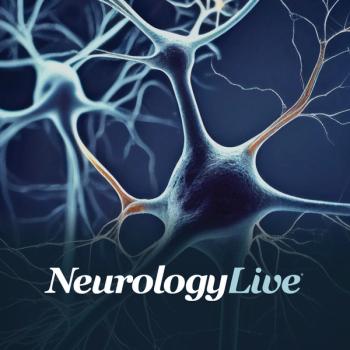
Young Man Who Has Become Uncomfortably Numb
A 27-year-old man has had right arm numbness for about 2 weeks. What’s in your differential?
THE CASE
A 27-year-old man has had right arm numbness for about 2 weeks. He describes the sensation as “a heavy feeling.” Initially, the sensation was intermittent, but now it is stable. He denies any weakness, pain, coordination problems, or visual changes.
He is a psychologist and has been functioning well at work. He has no limitations in driving. He does not typically engage in physical activities such as sports, and he has not noticed any changes in his ability to carry out his usual activities.
Medical history
The patient was involved in a motor vehicle accident as a teenager and sustained a fracture of several bones in his foot. This injury healed well without surgery.
Family history
His parents are both in their 40s and healthy.
Physical examination
The patient is alert, oriented, and cooperative. No involuntary jerks or tremors are noted during the examination. His skin is normal, without discoloration, rashes, lesions, or bruises.
Vital signs are all normal. Breath sounds are normal and regular, pulse is normal and regular, and heart rhythm is normal without any murmurs. His abdomen is non-tender and non-distended.
Neurological examination
The patient’s extraocular movements are normal without any nystagmus or limitations of movement. He does not have diplopia or a visual field cut. His visual acuity is not impaired.
His motor strength is 5/5 in all extremities with the exception of his right arm. His biceps and triceps are slightly weak with strength of 4+/5. His right hand strength is normal. His right upper extremity reflexes are brisk, and his reflexes are normal in his other extremities. His sensory examination is normal to light touch, pinprick, position, and vibration in all extremities, including the right upper extremity. His gait is normal, and he can do a tandem walk and Romberg test without difficulty.
Diagnostic evaluation
The patient was sent for a brain MRI scan with gadolinium, which showed a small dense lesion in the left internal capsule. No other lesions were visible on his brain imaging study, and no edema was noted. He received a diagnosis of ischemic stroke, and tests were ordered to determine the cause.
The results of an electrocardiogram, an echocardiogram, and brain and neck magnetic resonance angiography were all normal. The patient had an extensive blood workup, including a complete blood cell (CBC) count with differential; antinuclear antibody and thyroid tests; liver function tests; and measurement of protein C, protein S, factor V Leiden, anticardiolipin antibodies, lupus anticoagulant, and fibrinogen levels-all of which were normal.
What do you suspect caused this patient’s lesion and symptoms? >>
DIAGNOSIS: CRYPTOGENIC STROKE
Further workup
The results of a thorough workup to identify stroke risk factors were completely negative. Other conditions were considered as possible causes of his symptoms and lesion, including demyelination, infection, a cyst, and an aneurysm. The brain imaging study was repeated after 3 months and was unchanged: it showed a small area of density in the left internal capsule without edema. The scan results were again interpreted as a chronic stroke.
The patient declined a lumbar puncture after he was told that it was unlikely to be helpful in his diagnosis. He received a diagnosis of cryptogenic stroke. There was a concern that he could have an occult tumor, but he did not have any weight loss or fatigue, and he did not have occult blood on a rectal examination. His CBC count with differential was completely normal and did not show any indication of leukemia or lymphoma.
Course of illness
He continued to experience mild disability because of his stroke. His right arm remained weak on physical examination, and he continued to have numbness. Given the location of his stroke, it is not entirely clear why he had numbness in addition to his weakness.
The patient was concerned about the potential risk of future strokes. After a long deliberation with his neurologist, he opted to take aspirin for stroke prevention.
Discussion
Cryptogenic stroke is estimated to account for approximately 10% to 20% of ischemic strokes in young people, and they are believed to be embolic, although they can be thrombotic as well. Risk factors for stroke in the young include sickle cell anemia, bleeding disorders, inflammatory conditions, congenital vascular anomalies, and heart conditions. This patient did not have any of these conditions.
When he was initially seen, he mentioned that he had intermittent symptoms. It is possible that he was experiencing transient ischemic attacks prior to his stroke.
Patients who have experienced a cryptogenic stroke may need to have physical therapy, cognitive therapy, or other types of rehabilitation-depending on the effects of the stroke.
In the absence of an identifiable risk factor, blood thinners such as aspirin, dabigatran,1 or rivaroxaban2 may be recommended for prevention of recurrent strokes. However, blood thinners are not always considered optimal in the context of a cryptogenic stroke, as some people are unable to tolerate these medications because of adverse effects. Other patients have an active lifestyle that may predispose them to the risk of injuries, bruising, or bleeding.
Take-home points
• Patients who have motor weakness may complain of numbness, particularly when the weakness is mild.
• A patient cannot be given a diagnosis of cryptogenic stroke until thorough diagnostic testing for risk factors has turned out to be negative.
• Other considerations besides stroke (such as multiple sclerosis, leukoencephalopathy, tumor, or an infection) need to be considered in the context of a cryptogenic stroke.
References:
1. Diener HC, Sacco RL, Easton JD, et al.
2. Hart RG, Sharma M, Mundl H, et al.
Newsletter
Keep your finger on the pulse of neurology—subscribe to NeurologyLive for expert interviews, new data, and breakthrough treatment updates.


































